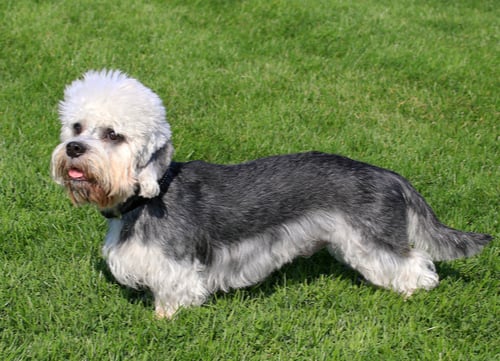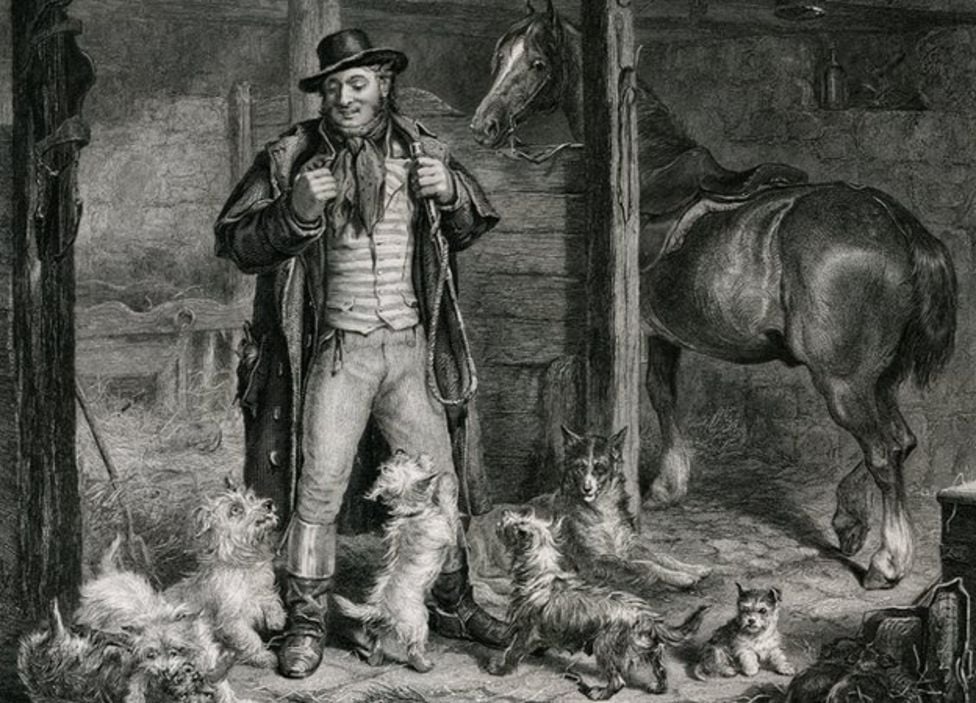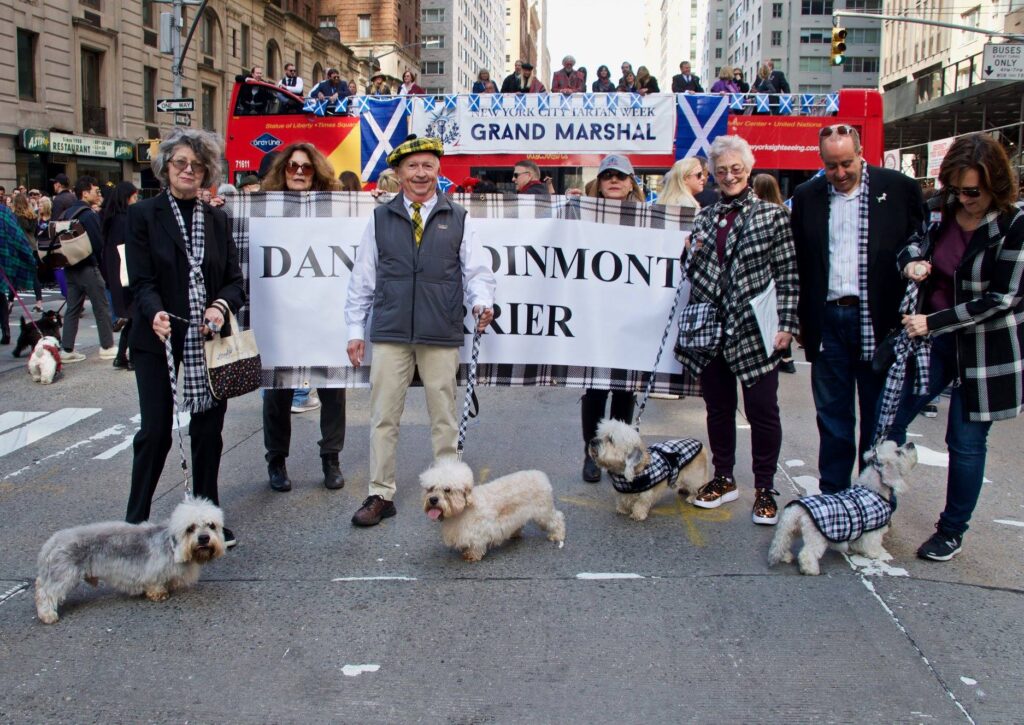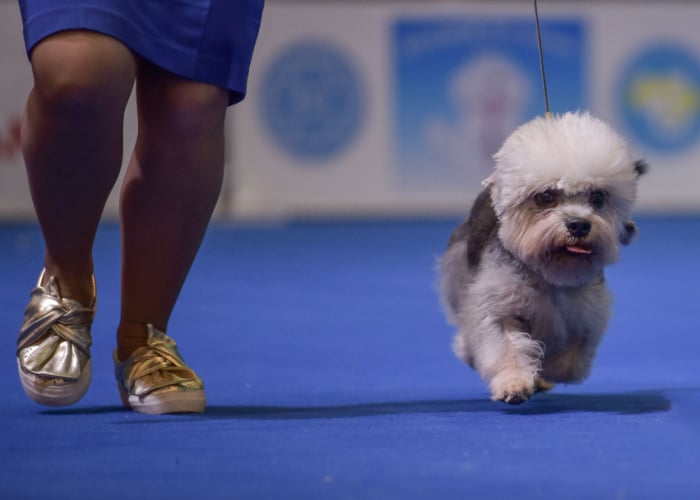
Table of Contents
Not a lot of people know about this breed, but the Dandie Dinmont Terrier is not something you should ignore when you chance upon one.
Don't worry; with their distinctly long body and adorable top knot, I'm sure you would recognize them easily.
That is, if you'd be lucky enough to meet one. You see, the Dandie Dinmont Terrier is a rare breed.
In fact, since 2006, the UK's Kennel Club (KC) has included the Dandie in their Vulnerable Native Breed, a list of breeds that only have an annual registration of fewer than 300 puppies within the United Kingdom and Ireland.
In 2016, KC only had 90 registered puppies, which is still more than the American Kennel Club's 75 registered Dandies in the same year.
Unfortunately, because of their waning number, Dandies are sometimes called ‘Scotland's Forgotten Breed.'
If ever you get the chance to adopt one, I'd say go for it! But, of course, not without researching first if this is the best breed for you and your family.
In this article, we'll get to meet the Dandie Dinmont Terrier—their appearance, personality, health concerns, and all there is to know about this rare breed.
RELATED: 14 Most Rare Dog Breeds on the Planet
Meet the Dandie Dinmont Terrier!
The Dandie Dinmont Terrier is of Scottish heritage. They are originally bred to work, especially to hunt rodents, otters, and badgers. Dandies are quite effective at this, thanks to their long, curved, and wiry body.
And just like some terriers, these dogs are considered small breeds.
The standard Dandie Dinmont Terrier stands at 8 to 11 inches from the withers. They weigh 18 to 24 pounds and live for about 12 to 15 years.
Appearance
The American Kennel Club's Breed Standard described Dandie Dinmont Terriers as “long, low-stationed working terrier(s) with a curved outline.”
Dandies' heads may seem a bit oversized to their bodies because of their fluffy ‘top knot, ‘ but they should still be proportioned to their bodies.
The eyes are mostly rich, dark hazel in color, and are rounded and expressive, with black rims on the outside. They're large but not protruded.
Only two colors are considered standard by both AKC and KC for this breed—mustard and pepper.
The pepper color can range from dark bluish-black to light, silvery grey. Conversely, the mustard is more of a reddish brown to pale fawn in shade.
The top knot should also be either silvery white or creamy white, while the muzzle, legs, and feet should be slightly darker in color in comparison.
You'll see their coloring concentrated at the shoulder and hips and then tapers off down the legs.
Personality & Characteristics
Dandies are described as independent dogs. They are dignified yet affectionate in nature. Adaptable and easy to please, yet have their own way of doing things.
Of course, this still varies from dog to dog, as they have their own individual quirks.
Generally, Dandie Dinmont Terriers are also intelligent dogs who are determined and persistent to accomplish whatever tasks are given to them, be they as little exterminators or watchdogs.
Yes, they are good watchdogs, especially with their deep baritone and loud bark. Oh, you'd be surprised by how much their barks pack a punch, given their tiny, lithe bodies.
But don't worry; they're not much of a barker. You can even say Dandies are more reserved than most of their terrier cousins.
And yes, that also means they aren't much of a hyperball.
They still enjoy the company of kids (under supervision, of course!), but you won't find them play-chasing them around the house or yard. Dandies will most likely just cuddle them, but with an occasional romping.
If you have other pets, there's no need to worry about how your Dandie will react around them because these dogs are also fairly good with other animals, with proper socialization and training.

History
The Dandie Dinmont Terrier's history is highly romanticized, and rightly so.
Their origin can be traced back to the early 1700s on the border of northern England and southern Scotland, where they served as exterminators of rodents, badgers, and otters at home or on the farm.
Unfortunately, there were no historically accurate written records about how Dandie Dinmont Terriers came about.
Some say they were a cross between the extinct Scotch Terrier and Ottherhounds; others say they were bred from a foreign dog with a Dachshund-like body and a local one that resembled Yorkshire terriers.
Dandies became popular when a description of a long-bodied dog with a distinct top knot and a fierce determination first appeared in literature in Sir Walter Scott's novel “Guy Mannering.”
It was inspired by Scott's childhood stay at his grandparents' farm on the Scottish Borders.
He heard of a farmer by the name of James Davidson, who bred and kept “mustard and pepper terriers,” whom he oddly called by only two names despite there being twenty.
In 1815, Scott wrote this farmer character in his novel and named him Dandie Dinmont, who owned a pack of six loyal dogs who were named different variations of “mustard” and “pepper.”
The Guy Mannering novel made these terriers famous, with aristocrats from all over the country writing Davidson, then already famously called Dandie Dinmont, their interests in purchasing these dogs.
Since the late 1800s up to this day, this breed's line has been hanging on the balance, facing possible extinction because of their dwindling numbers.
But thanks to Dandie enthusiasts all over the world, these dogs are still being celebrated as they were hundreds of years ago.
Read more about Dandie Dinmont Terrier's history here.
The Needs of a Dandie Dinmont Terrier
Because Dandies are rare dogs, being able to care for them is special in itself. But that doesn't stop there.
As a responsible Dandie owner, you must know that they have needs you have to meet.
We'll break these needs down in this section.
Living Condition
If you live in an apartment with not much area to roam around, you don't have to worry because Dandies can fare well in urban living with limited space.
Small gardens work well for them, too, since they don't require a large room to run around, given those short legs.
Dandies are also good with kids and other pets, so families with children or other dogs can also enjoy their presence.
Training & Exercise
Yes, Dandies were originally bred to hunt, but they really can't run for long hours and distances. So, if you're looking for a jogging buddy or hiking companion, better look at other dog breeds.
Dandies only require 30 minutes to 1 hour of exercise daily. Chasing balls or sticks in your yard is good enough for them.
As with many other dogs, they also require outdoor activities to socialize and be familiar with strange people and animals.
But remember, they're still terriers. They still have the tendency to chase after smaller animals they might see in the park.
Make sure they are leashed to keep them from running off.
This, of course, can be prevented with proper training.
Terrier dogs are known for being stubborn, so a reward-based approach will go a long way in training your Dandie Dinmont.
Nutrition
An adult Dandie Dinmont typically weighs 18 to 24 pounds, so they would need approximately 5.6 to 7.8 ounces of dog food divided into two meals every day.
It's best to choose a dog food that's tailor-fitted to Dandie Dinmont's needs. Of course, that means a balance of protein, carbs, and fats.
Consult your trusted vet to know what food and how much of it you should give your Dandie.
RELATED: Best Dog Food for Boston Terriers: 9 Vet-Recommended Brands
Grooming
Lucky for you because Dandie Dinmont Terriers don't shed as much, even though they have double coats.
But that doesn't mean they don't need grooming because they still do.
Their hair still needs brushing daily at best, weekly at the minimum. This will not only maintain healthy and shiny coats, but it will also prevent their hair from matting.
It's also best to have them professionally groomed a few times a year. You will see them stripping excess hair from your dog using specialized equipment for it.
While you're at it, you can ask the experts for some advice and tips or tricks the next time you want to do it yourself.
As with any other dog, a Dandie's nails should be regularly trimmed weekly, and their ears should be cleaned at least a few times a week.
Excess hairs from their ears can be plucked by hand, but if you're unsure how to do it, you can also ask for a professional groomer's help.
Of course, you can't forget about their oral health. Brushing their teeth regularly, at least once a week, is also important.
This, along with giving them dental water additives and dental treats, will help maintain their pearly whites sparkly clean and their breaths minty fresh.
Dandie Dinmont Terrier Health Issues
Dandies are generally healthy dogs. They only have a few health issues experts tell us to watch out for, some of which are the following:
These, of course, are apart from the common issues found in dogs, like parasite infestation, especially when in season.
Despite these, the Dandie Dinmont Terrier Club of America, Inc. has no recommended tests for Dandies.
According to the club's health statement, “Dandies have few health issues,” none of which can be currently tested for. Read their full statement here.
Where to Get Dandie Dinmont Terriers in the US
There are not a lot of breeders you can find in the US that let you adopt Dandies, but the best place to try is the Dandie Dinmont Terrier Club of America.
They are a group of fanciers who have been trying to preserve and reintroduce this breed to the public since the 1930s.
You can check out the Breeder Referral page on their website.

Fun Facts about the Dandie Dinmont Terrier
- Dandie Dinmonts are the only dog breed whose name came from a fictional character, specifically, in Sir Walter Scott's 1815 novel, “Guy Mannering.”
- The ancestry of the majority of Dandies today can be traced back to Sir Walter Scotts' Dandie itself, The Mertoun Dandie.
- Dandie Dinmonts are the only breed of dogs who are officially allowed to wear a Scottish clan tartan, specifically the black and white Sir Walter Scott tartan.
- The earliest known painting of a “Dandie-like dog” was in 1770 by Thomas Gainsborough, where he depicted the dog at the foot of Henry, the third Duke of Buccleuch.
- Popular Dandie owners throughout history include England's Queen Victoria, France's King Louis Philippe, Agatha Christie, Sir Alec Guinness, and Sir Edwin Landseer.
FAQs about the Dandie Dinmont Terrier
Are Dandie Dinmont Terriers rare?
Yes, Dandie Dinmont Terriers are considered rare, not only in the US but even in the UK.
The most recent recorded number of registrations we can gather is in 2016, when only 90 Dandie puppies were registered with the UK's Kennel Club, and 75 puppies were registered with the American Kennel Club.
Dandies have also been listed under the Vulnerable Breeds List of the KC since 2006.
Some say Dandies have been rare because of the two World Wars.
Unlike other breeds, the Dandie did not get the chance to spread out across the world. Some also had to die because of food rationing, and this breed “never really picked up where they left off.”
Added to the fact that hunting otters (one of the primary reasons they were bred) became illegal in 1978.
But thankfully, there are clubs and organizations dedicated to honoring this fascinating breed, that's why we still know and recognize them up to this day.
Are Dandie Dinmont Terriers hypoallergenic?
Yes, Dandie Dinmont Terriers are considered hypoallergenic because they shed little if they shed at all.
However, you should know that some consider' hypoallergenic dogs' a myth.
While Dandies don't lose as much hair as other breeds, they still produce the same ‘protein' that can possibly trigger people with allergies.
Getting irritated by the shed hair is different from getting an allergic reaction to it.
How much is a Dandie Dinmont Terrier?
Just like any rare product or commodity, purchasing a purebred Dandie Dinmont Terrier can be quite expensive.
You can also expect a premium price if you get one from a decent and responsible breeder. One source says a Dandie Dinmont Terrier can set you back for $1,500 to $3,000.
Add that to the cost of providing him with his needs, like food, toys, a bed and/or crate, grooming supplies, training equipment, etc.
Dandie Dinmont Terrier: Should You Adopt One?
If you ever got the chance to adopt a Dandie Dinmont Terrier, you should go for it.
Not only because they are adorable pups who would cuddle with you and act as the family's watchdog but also because they help survive their breed.
As we always say, dog parenthood is a responsibility as much as it is a privilege. You need to be able to commit to taking care of their needs, and they would love for you all their life.
Have you ever encountered a Dandie Dinmont Terrier in the dog park? Or perhaps you're lucky enough to own one?
Share with us your experience in the comments section!
You can also check out our recommended articles below for more terrier dog breed profiles.













